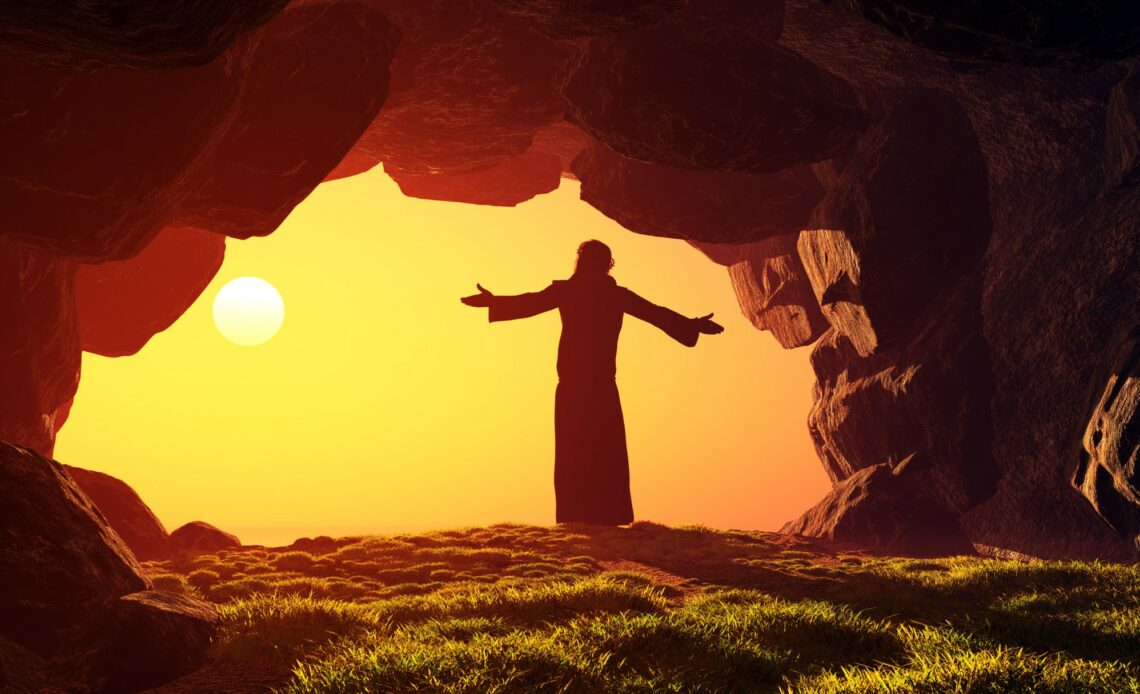“That Christ should suffer, and that he should be the first that should rise from the dead, and should shew light unto the people, and to the Gentiles” (Acts 26:23).
“That Christ should suffer”
The suffering of the Savior is evident based on the Scriptures. From the beginning, one can see that God’s chosen Messiah would suffer somehow. For instance, when Adam and Eve sinned in the Garden, they were thrown out of God’s presence. But God was not done with them and His creation. God foretold of the day that the Messiah would come and crush the head of the serpent but that the serpent would bruise His heel. The bruising of Christ’s heel can be seen in his suffering.
Later, David wrote what has often been referred to as the Psalm of the Cross. Psalm 22 is rich with prophetic references. David said, “My God, my God, why hast thou forsaken me? why art thou so far from helping me, and from the words of my roaring” (Ps. 22:1). While Jesus hung on the cross and bore the weight of God’s wrath, He cried out with the same words.
Later David would say, “All they that see me laugh me to scorn: they shoot out the lip, they shake the head, saying, He trusted on the Lord that he would deliver him, seeing he delighted in him” (Ps. 22:7-8). Yet again, the events that David speaks of were fulfilled in the suffering of Christ.
Finally, David said, “For dogs have compassed me: the assembly of the wicked have inclosed me: they pierced my hands and feet” (Ps. 22:16). Here one can see a unique prophecy concerning the Savior.
When David wrote these words, the crucifixion method had not been invented. It was not invented until sometime later during the Persian Empire. Thus, David spoke of Christ being pierced in His hands and feet through divine inspiration.
The Father knew that the Son would suffer. Even before the foundations of the world, Christ was the Lamb of God slain. Scripture says, “And all that dwell upon the earth shall worship him, whose names are not written in the book of life of the Lamb slain from the foundation of the earth” (Rev. 13:8). In the eyes of God, Jesus was always the Lamb of God.
However, the Bible also tells of the plan of God entering into time and taking place. For example, Daniel chapter 9 speaks of the Messiah coming at a specified time. It tells of the Messiah bringing righteousness, reconciliation, and an end to sin. But it also tells of the Messiah making atonement for iniquity and being cut off.
Finally, Isaiah’s Suffering Servant is possibly the most detailed description of the Messiah’s suffering in the Old Treatment. Isaiah speaks of Jesus as One Who would suffer, be afflicted, be smitten, and be cut off from the land of the living. He tells of the Father crushing the Son and putting Him to grief.
Simply put, the Son came to die a sinner’s death.
“and that he should be the first that should rise from the dead”
While the Son suffered and died, He did not stay dead. The Bible speaks just as clearly about the resurrection of Christ. Various people were raised from the dead in the Bible. For example, in the Old Testament, a boy died. Elijah was present and took the boy to a room to be alone. There he prayed. Scripture says, “And he cried unto the Lord, and said, O Lord my God, hast thou also brought evil upon the widow with whom I sojourn, by slaying her son?” (1 Kings 17:20). Shortly after, the Bible states, “And the Lord heard the voice of Elijah; and the soul of the child came into him again, and he revived” (1 Kings 17:22). However, the boy lived again to die again.
Later one can read of Elisha bringing a boy back from the dead. Scripture says, “The he returned, and walked in the house to and fro; and went up, and stretched himself upon him: and the child sneezed seven times, and the child opened his eyes” (2 Kings 4:35). Once again, this boy lived to die again.
Still later, after Elisha died and was buried, men threw a dead body in Elisha’s tomb. The Bible says, “And it came to pass, as they were burying a man, that, behold, they spied a band of men; and they cast the man into the sepulchre of Elisha: and when the man was let down, and touched the bones of Elisha, he revived, and stood up on his feet” (2 Kings 13:21). But even this man only lived to die again.
As one approaches the New Testament, he will see that Lazarus was laid in a tomb for four days. Then Jesus came and called Lazarus out of the tomb. Sure enough, Lazarus rose from the dead and walked among man. However, even the resurrection of Lazarus was finite. So Lazarus lived like the others to die again like the others.
The resurrection of Jesus was unique. There has been nothing like it before, and there has been nothing like it since. This is why the author of Hebrews could say, “And these all, having obtained a good report through faith, received not the promise: God having provided some better thing for us, that they without us should not be made perfect” (Heb. 11:3-40). The man Christ Jesus was made perfect after His death and resurrection. He received a glorified body. Thus, Christ was the first fruits of what is to come.
Both the living and dead Christian await the glorious resurrection and return of Christ. John has said that when Christ returns, the dead and living will dwell with Jesus to rule upon the land. Paul has said, “In a moment, in the twinkling of an eye, at the last trump: for the trumpet shall sound, and the dead shall be raised incorruptible, and we shall be changed” (1 Cor. 15:52). The man Christ Jesus has already experienced this type of resurrection. The Christian awaits His second coming.
“and should shew light unto the people, and to the Gentiles”
Christ came and died to show light unto the people and to the Gentiles. In other words, Jesus came for both the Jew and the Greek. The ministry of Christ was a ministry of light. Darkness prevailed in the land, but the light of Christ shone into the darkness. John said, “In him was life; and the life was the light of men. And the light shineth in darkness; and the darkness comprehend it not” (John 1:4-5). Jesus came so that the people who dwelled in darkness could see a great light and so that they would know the truth.
However, just because Jesus came as the Light did not mean people would want to see. Later Jesus would say, “He that believeth on him is not condemned: but he that believeth not is condemned already, because he hath not believed in the name of the only begotten Son of God. And this is the condemnation, that light is come into the world, and men loved darkness rather than light, because their deeds were evil” (John 3:19-20). While some turned to the Light, many did not receive Christ when He came.
Instead, the people’s works were evil; thus, they did not want the Light lest the Light expose them. But the one who would follow Jesus will see the promises of God’s Word shining through. Jesus said, “…I am the light of the world: he that followeth me shall not walk in darkness, but shall have the light of life” (John 8:12). Jesus was highly concerned with coming to save the sinner who dwelled in darkness. Shortly before His death and resurrection, He reminded His disciples, “I am come a light into the world, that whosoever believeth on me should not abide in darkness” (John 12:46). Jesus has come as the Light of the world. When the Christian looks to Him, he will have the Light of life.
Final prayer
Father, I thank You for sending Jesus to be my Light. Teach me to abide in Christ and to know the truth as I come to know Him. Thank You for my Savior. Help me to honor You through Christlikeness. In Jesus’ name, Amen.


